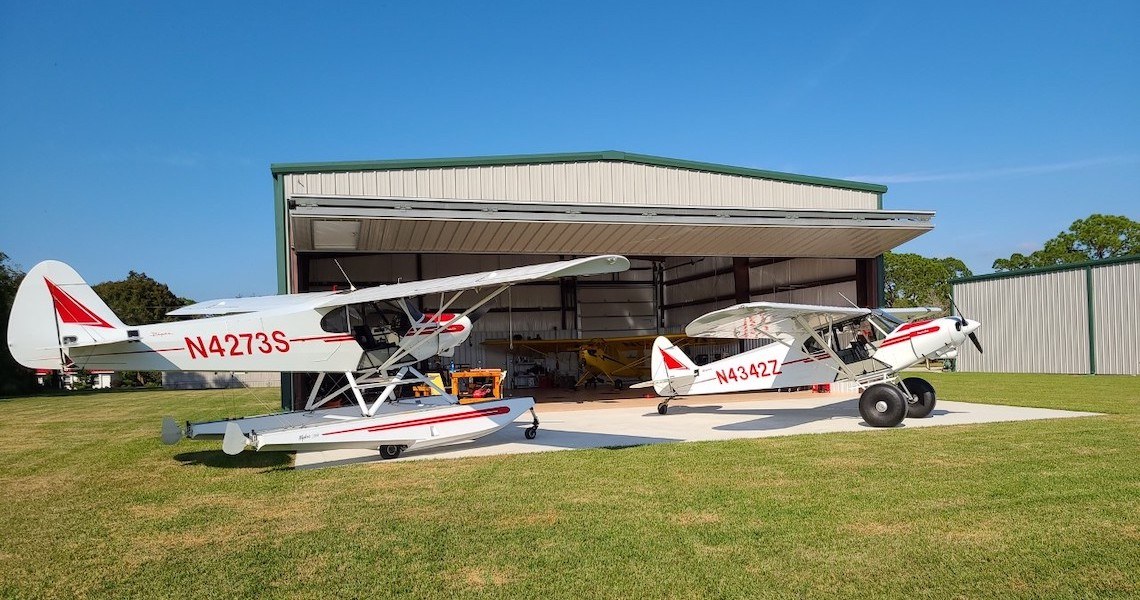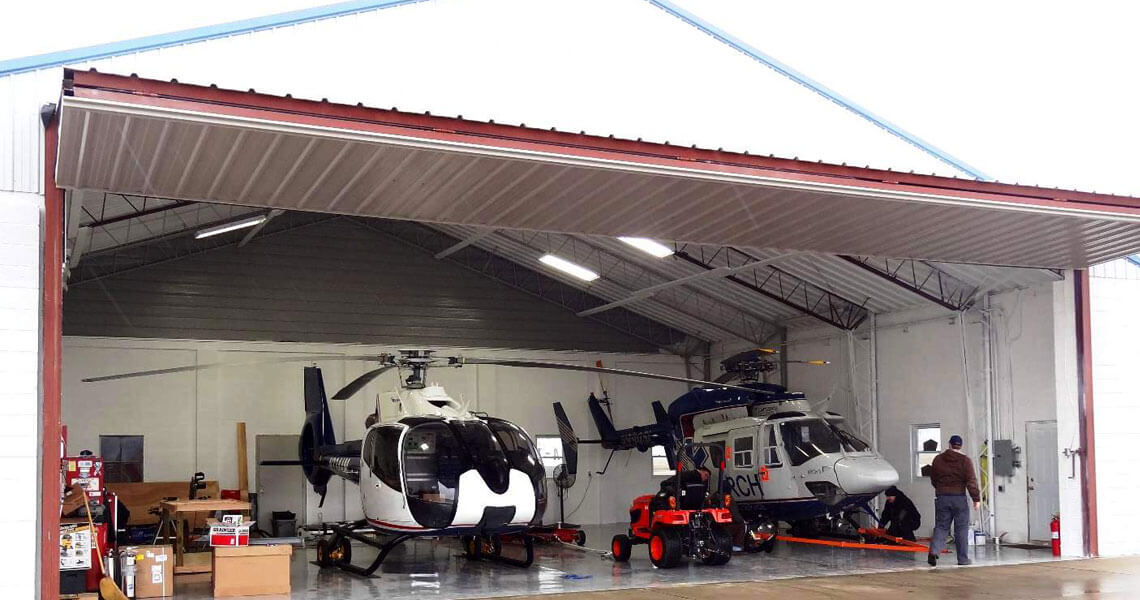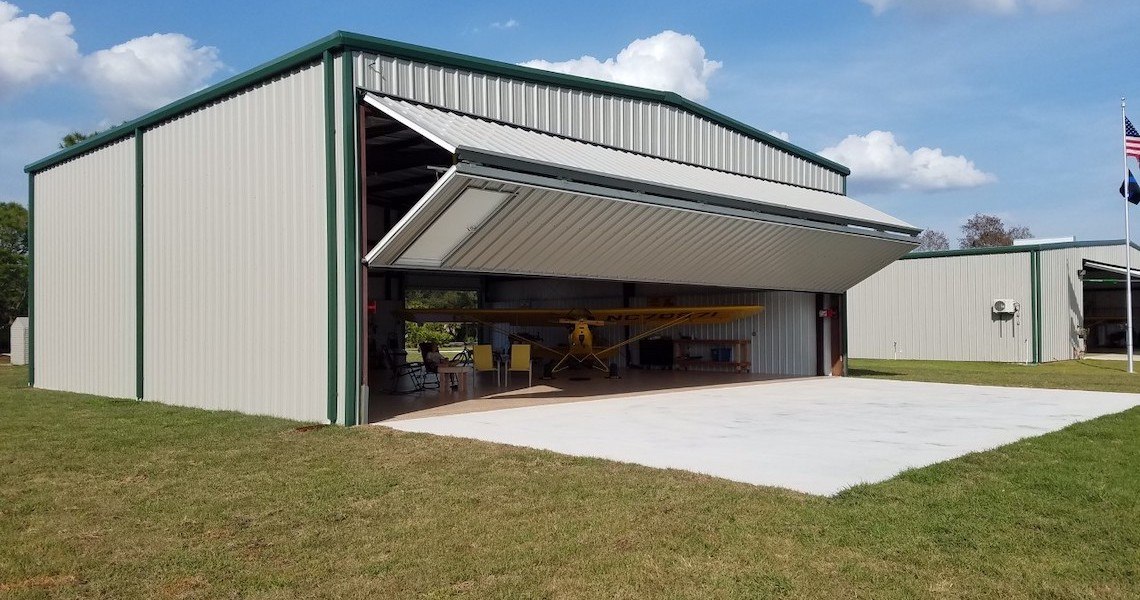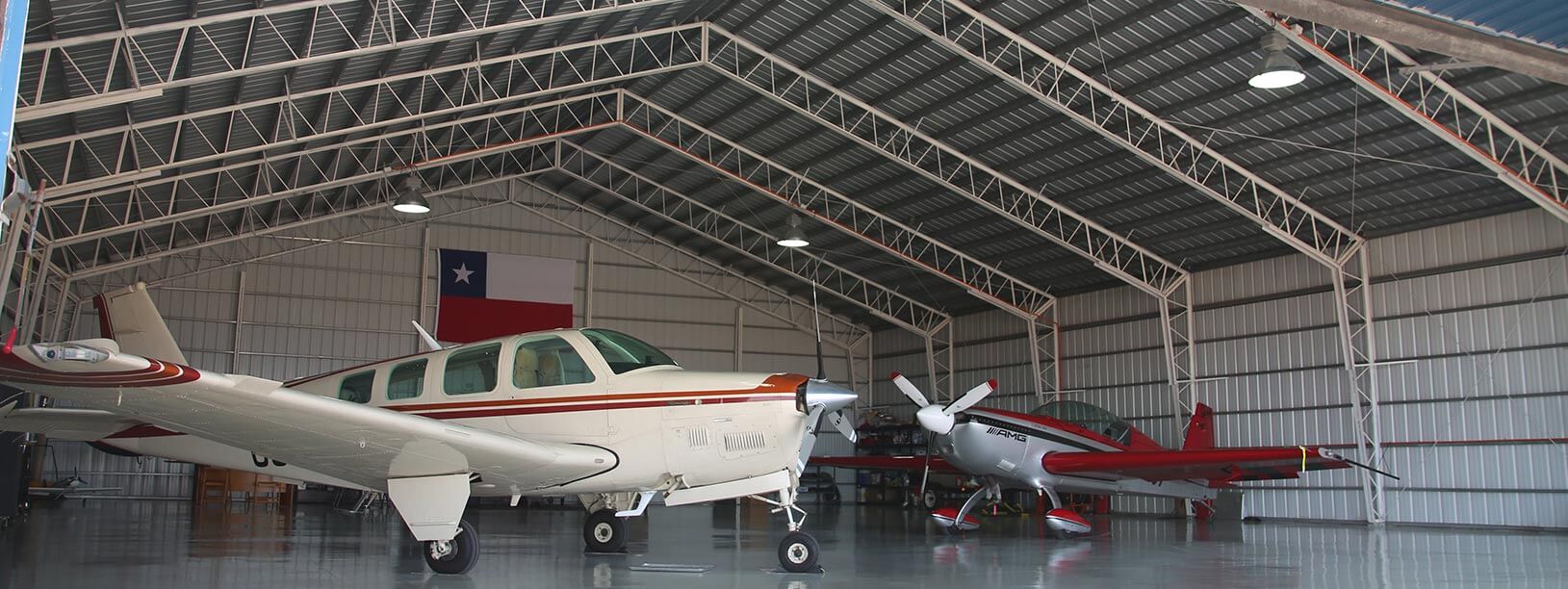5 Reasons to Choose a Custom Worldwide Steel Airplane Hangar

Like most passions that require a heavy investment of time, commitment and finances, there’s something about the transition from renting to buying that just feels good. For pilots, buying that first aircraft is almost always a milestone. The one that makes you feel like a real pilot rather than someone who just dabbles in flying. The step that confirms this isn’t just a hobby you might outgrow or lose interest in. This is for life.
In aviation, there’s another monumental transition after purchasing your own aircraft: When you make the choice to take ownership of where you keep that aircraft.
When should you build your own aircraft hangar?
You should consider building your own hangar after you’ve done the math and realized renting hangar space just isn’t the best choice anymore. Or maybe you’re running a business that’s dependent on your personal aircraft and don’t want any aspect of that business to be at the mercy of someone else’s decisions.
When you design and build your own hangar, you get to choose where you want it located, include all the features you could possibly imagine, and enjoy 24/7 private access with no chance of hangar rash (unless you’re building a hangar for multiple planes … in that case, just factor in some additional square footage to stay safe and comfortable).
Sounds like a dream come true? For our customers, it has been. Designing your own hangar from the ground up means you can customize it to your individual needs — the size of your airplane (down to wingspan and tail height), the way you use it (are you loading it up with goods for regional flights? Flying customers with deep pockets to and from business meetings? Enjoying the freedom of destinationless joy rides?), plus additional space for equipment storage, utilities, facilities, even living quarters.

How to start designing your own metal hangar
With all that choice can come a bit of uncertainty as well, especially for first-time builders. You know how important this project is, and you don’t want to mishandle any aspect of it. At Worldwide Steel, we understand the gravity of each and every decision, and work with you to shoulder the responsibility of each and every consideration — so the entire process is enjoyable and rewarding for you, not stressful.
Here are just a few aspects you’ll need to consider when building your own hangar, and why Worldwide Steel is the right partner for this project
1. Material quality. A hangar isn’t just an investment in and of itself — it’s literally protection for another investment. That means it isn’t a place to cut corners or make guesses. Worldwide Steel is an ideal partner in this respect for four primary reasons.
- First, unlike some other metal building companies, we’re the manufacturer of our products, not just the broker.
- Second, we offer an industry-leading 50-year structural warranty that guarantees the materials and workmanship of your hangar will be defect-free for decades.
- Third, we’ve been doing this a long time. We have expertise in things you may never think of on your own — like how an aircraft hangar needs to be built on a significantly thicker concrete slab than a metal building that isn’t designed to support so much weight on such a small surface area, or things to watch out for when choosing a site (like grade and soil quality).
- Fourth, we’re an APOA Lifestyle member, which means we have access to information on the latest aviation regulations, new advancements in the industry and more. If there’s a question our years of experience building hangars doesn’t answer, we can reach out to the world’s largest aviation community for support.

2. Accessibility. One of the most important choices when designing a hangar is its doors. Worldwide Steel offers three types of doors that are often chosen for hangars:
- Traditional bi-fold doors fold in half when opening, like an accordion. They open outwards, which means you don’t have to account for interior space to accommodate them — your plane(s) and equipment can take up the entire interior.
- Hydraulic doors operate like a standard garage door on a house. They open upwards and rise as a single unit. Some customers appreciate that they can be built with windows to let in light. They do take up vertical space when they’re open, so hangars with hydraulic doors need to be designed slightly taller than they would otherwise be.
- Stack doors aren’t a super common choice, since their size is constrained by the overall width of the hangar and limit the space in which a plane can maneuver straight in and out of the building. Think of a barn door that slides along the wall to open. The upside of stack doors is that they can be opened manually, in case of a power outage. Sometimes we recommend a fly-through hangar (with doors on both sides) that has bi-fold or hydraulic doors on the front and stack doors on the back, so you’re covered in case of emergency.
3. Customization options. Because Worldwide Steel manufactures hangars ourselves, you’re not limited to off-the-shelf components. The customization options are almost literally endless. You can check it out yourself with our 3D Building Designer, which lets you test out hangar ideas visually before committing. The tool even lets you add a little guy and a personal aircraft for scale. Fun, right?

4. Big ol’ clearspans. Yes, that’s the technical term. But really. With available clearspans from 24′ through 100′ wide — no need for columns — our hangars can be designed to accommodate everything from a helicopter or single-engine to a small fleet of jets. That also means you can factor in space for everything you’ll need to maintain and repair your crafts, like ramps, stairs and lifts.
5. Hassle-free assembly. Worldwide Steel building kits use a pre-punched truss system that bolts together easily, which makes assembly a snap. Often, you won’t even need to rent heavy equipment or hire a crew to erect your hangar. For larger structures, however, some customers have found having access to a forklift or tractor makes the process even easier.
When it’s time to level up your passion for planes, it’s time to get in touch with the team at Worldwide Steel Buildings. We can’t wait to get started on your custom aircraft hangar — just give us a call at (800) 825-0316 or request a quote online.